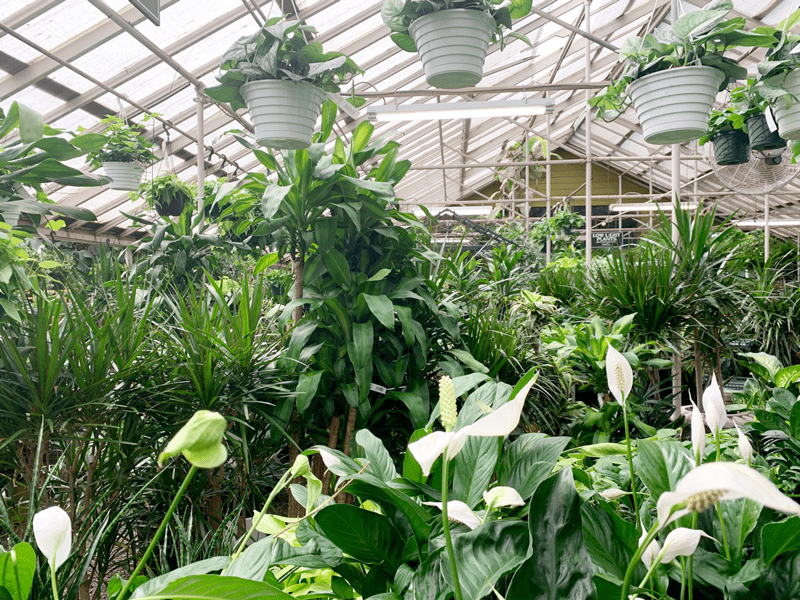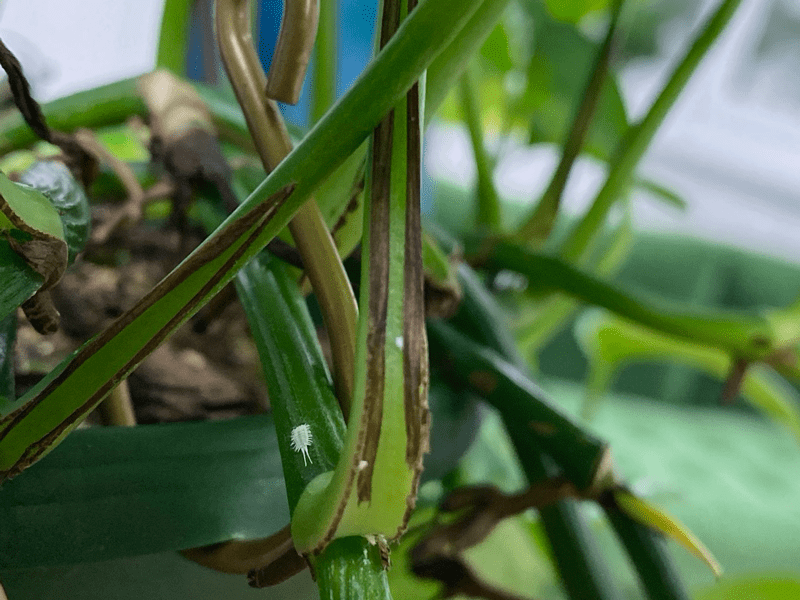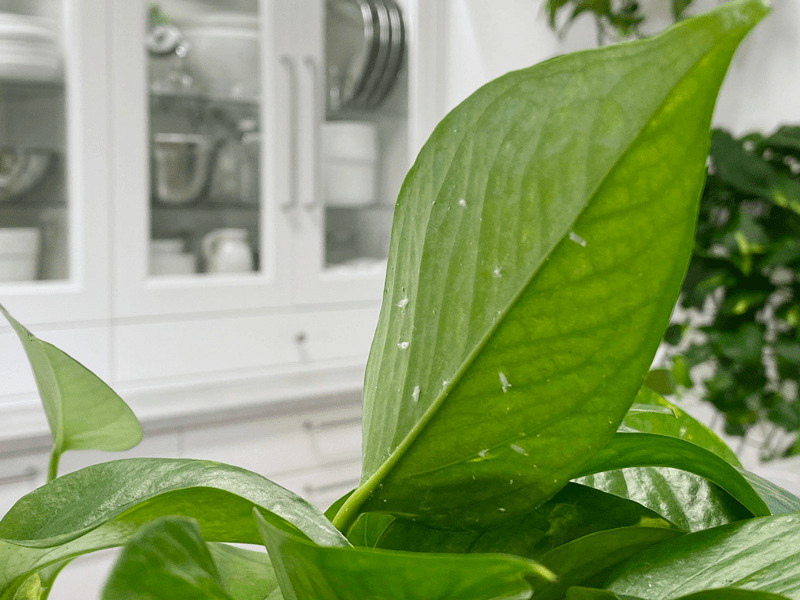Purchasing a Houseplant | What To Look For

 Add to favorites
Add to favorites
Learning the signs of a healthy plant is the first step in ensuring its overall success. Choosing healthy plants involves looking carefully at all parts of the plant, beginning with the most visible part – the leaves.
I live in a small town, and the plant selection is limited. When I first got into houseplants, I exhausted every place I could think of that could possibly carry plants. I visited grocery stores, a plant nursery, and a local flower shop. I extended my plant excursions to a nearby town but only found one place there: Home Depot.
I don’t want to call out stores and talk badly about them because, in general, these stores are excellent for other things. But I quickly learned who to avoid and who carried healthy plants. However, sometimes I backtrack to these places to “see” what they have in stock. Interestingly enough, I found several plant departments that didn’t know anything about what they were selling, which forced me to do my own research. Thank goodness for smartphones and Google. Here are a few things I learned along the way.

What to Look for When Purchasing a Plant
The overall health of the plant
- Does it look healthy? No? Keep looking. Yes? Continue down the checklist.
- Plants with limp, wilted, yellow, brown, or black leaves mean that the plant is either thirsty, suffering from a disease, or root-bound.
- A healthy plant should have plenty of healthy new growth. Except for plants with bi-colored or variegated leaves, most plants should display green leaves with bright, even color.
Plant pests to keep an eye out for
- Do you see any webbing on the plant leaves or stems? Yes? Webbing is a sign of spider mites. It could be made from general spiders, but spider mites are a bugger (pun intended) to eradicate, plus they can spread to the plants that you already have in your care.
- Do you see any other pests on the plant or pot? Educate yourself before you leave the house, so you know what plant pests look like. Mealybugs, spider mites, scales, and aphids are the most common. I will write a description below, but Google them and look at photos so you can identify them.
Look at the roots
- Healthy roots are signs of a healthy plant. Never hesitate to remove the plant from the pot to inspect the roots. If you feel uncomfortable doing this, have one of the plant nursery workers do it for you. If they refuse, they are hiding something…root rot!
- Rootbound: Another way to tell if the plant is rootbound is to pick up the plant and look at the drainage holes. If you notice roots growing through the hole, the plant has been in that pot too long. Another big sign that a plant is rootbound is roots growing on top of the potting mix. A rootbound plant isn’t always a bad thing if the plant is otherwise healthy, because it demonstrates that the plant is actively growing. However, keep in mind that if you buy a rootbound plant, you will have to repot it soon.
- Never choose a plant if its roots are soft, brown, or easily fall apart when you touch or pull them slightly. Also, remember some plants have delicate roots, and you have to examine them with care.
Dirty plants
I know this may seem silly, but look at how clean or dirty the plants are. Dirty plants don’t always equate to bad plants but look at this way…when you go to a restaurant, and they set down a tall glass of ice water in front of you, and there are lipstick smudges on it, would you drink it? Clean plants tell me that the seller takes pride in what they sell and perhaps puts effort into taking care of the plants.
White residue on plant leaves.
- Many indoor plants come from Florida, California, and Texas. Some grow in greenhouses; others are produced under screened enclosures called shade houses. Generally, water is pumped from wells, and plants are watered overhead with sprinklers. In south Florida, many nurseries have high concentrations of calcium in their water. When the plants are watered overhead, and water dries quickly, a white residue sometimes remains.
Common Bugs to Watch For
If you want to have healthy house plants, you MUST inspect them regularly. Every time I water a plant, I give it a quick look-over. Bugs/insects feeding on your plants reduces the plant sap and redirects nutrients from leaves. Some chew on the leaves, leaving holes in the leaves. Also watch for wilting or yellowing, distorted, or speckled leaves. They can quickly get out of hand and spread to your other plants.
IF you see ONE bug, trust me, there are more. Take action right away. Some are brave enough to show their “faces” by hanging out on stems in plan sight. Others tend to hide out in the darnedest of places, like the crotch of a plant or in a leaf that has yet to unfurl. Here are a few photos of mealybugs that I have encountered.
-

-
Mealybugs.
-

-
The plant is a pothos, but mealybugs can attack other plants.
- Mealybugs look like small balls of cotton. They can travel, slooooooowly, but they have a strong will and determination! Though they are slow-moving, if any plant is touching another, there is a chance the mealybug will hitch a ride on a new leaf and spread. They breed like rabbits of the insect world. Females can deposit around 600 eggs in loose cottony masses, often on the underside of leaves or along stems.
- Scales are dark-colored bumps that are primarily immobile insects that stick themselves to stems and leaves. They are rather inconspicuous and don’t look like a typical insect. They can range in color but are most often brownish in appearance. They’re called “scales” primarily due to their scale-like appearance on a plant, due to waxy or armored coverings. They are often seen in clumps along a stem, sucking away at the plant’s juices with their spiky mouthpart.
- Aphids are more commonly seen if you place your plants outdoors. Aphids are indeed bugs. They are tiny insects that, along with black, also come in shades of yellow, green, brown, and pink. They are often found on the undersides of leaves.
- Spider mites are more common on houseplants. They are not insects; they are related to spiders. These appear to be tiny black or red moving dots. Spider mites are nearly invisible to the naked eye. You often need a magnifying lens to spot them, or you may just notice a reddish film across the bottom of the leaves, some webbing, or even some leaf damage, which usually results in reddish-brown spots on the leaf.
Well, that ought to get you going. I hope you gained some good information to take plant shopping with you. Please leave a comment below. Blessings, amie sue
© AmieSue.com
Tags: Indoor Houseplants


 Add to favorites
Add to favorites
